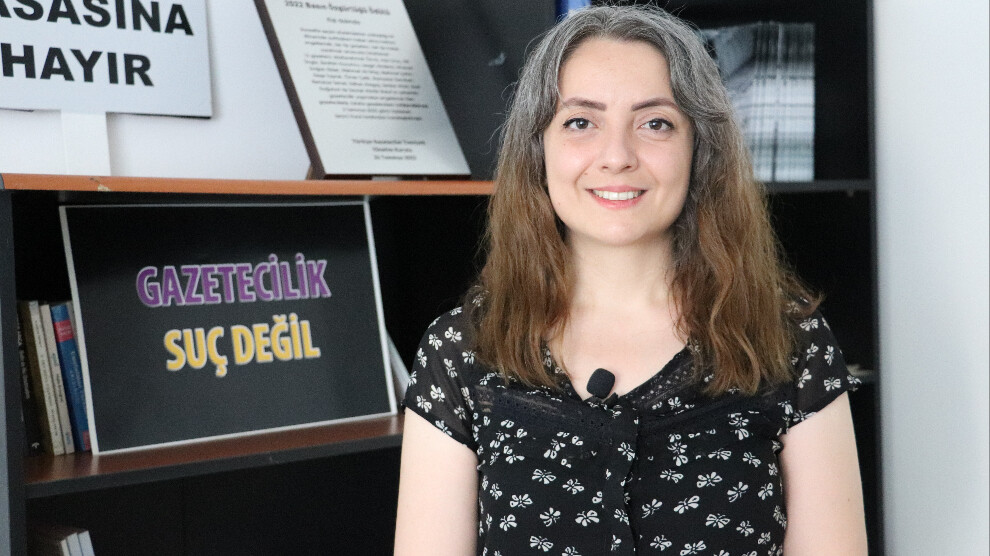Journalist Neşe Budak: A serious isolation has been imposed in prison
Journalist Neşe Budak, who was released from prison on July 12 after 13 months in prison, says a serious isolation has been imposed on prisoners and they are subjected to rights violations. “We will work harder to be their voices.”

MEDİNE MAMEDOĞLU
Amed- 15 journalists, who were arrested on June 16, 2022 as part of an investigation launched by the Diyarbakır Chief Public Prosecutor's Office for their journalistic activities, were released from prison on July 12, 2023 at the first hearing. At the hearing, the defenses of the journalists refuted the 700-page indictment prepared against them.
In an interview with NuJINHA, Neşe Toprak, one of the released journalists, talked about the ongoing rights violations in prison.
‘We waited for 13 months in prison to stand trial’
Neşe Toprak emphasized that they had been arrested although there was no concrete evidence or allegations against them and said:
“We waited for the indictment to be prepared in order to learn the accusations against us. Our arrest was unlawful. The indictment was prepared after we were held in prison for 10 months. They made great efforts to find accusations against us because there was no evidence. A 700-page indictment was prepared against us. We read the indictment with a smile on our face. You always feel comfortable when you know what you did and why you were arrested. We waited for 13 months in prison to stand trial. As our colleagues say, we judged them, they did not judge us. We were unlawfully held in prison for 13 months without any concrete evidence.”
‘A serious isolation has been imposed in prison’
Neşe Toprak told us that they had witnessed many rights violations in the Diyarbakır Women’s Closed Prison.
“A serious isolation has been imposed in the prison. We were not allowed to speak with other prisoners. There were cameras in wards. They watched us for 24 hours. Sick prisoners were handcuffed when they were transferred to hospital. We started a hunger strike to protest rights violations faced by prisoners. There were dozens of prisoners, who were not released although they had completed their sentences.”
Neşe Toprak is also a painter. When she was held in prison, she demanded equipment to practice her art; however, she was refused. She made a painting showing a woman having long hair to mark the International Women’s Day on March 8; however, her painting was taken from her.
“There was a resistance in Iran that started following the killing of Jina Mahsa Amini by Iran’s morality police. I wanted to make an artwork about Jina Mahsa Amini to mark the International Women’s Day. I portrayed a woman having long hair. I tried to send it by cargo; however, the prison administration confiscated it.”
‘We will keep reporting’
Neşe Toprak told us that they would keep reporting to reveal rights violations in prison. “Women face obstacles everywhere. Women always resist them. Journalism and art are tools for women to resist obstacles. We could not do journalism in prison and we were deprived of our rights. We are determined to keep reporting, to reveal rights violations.”
